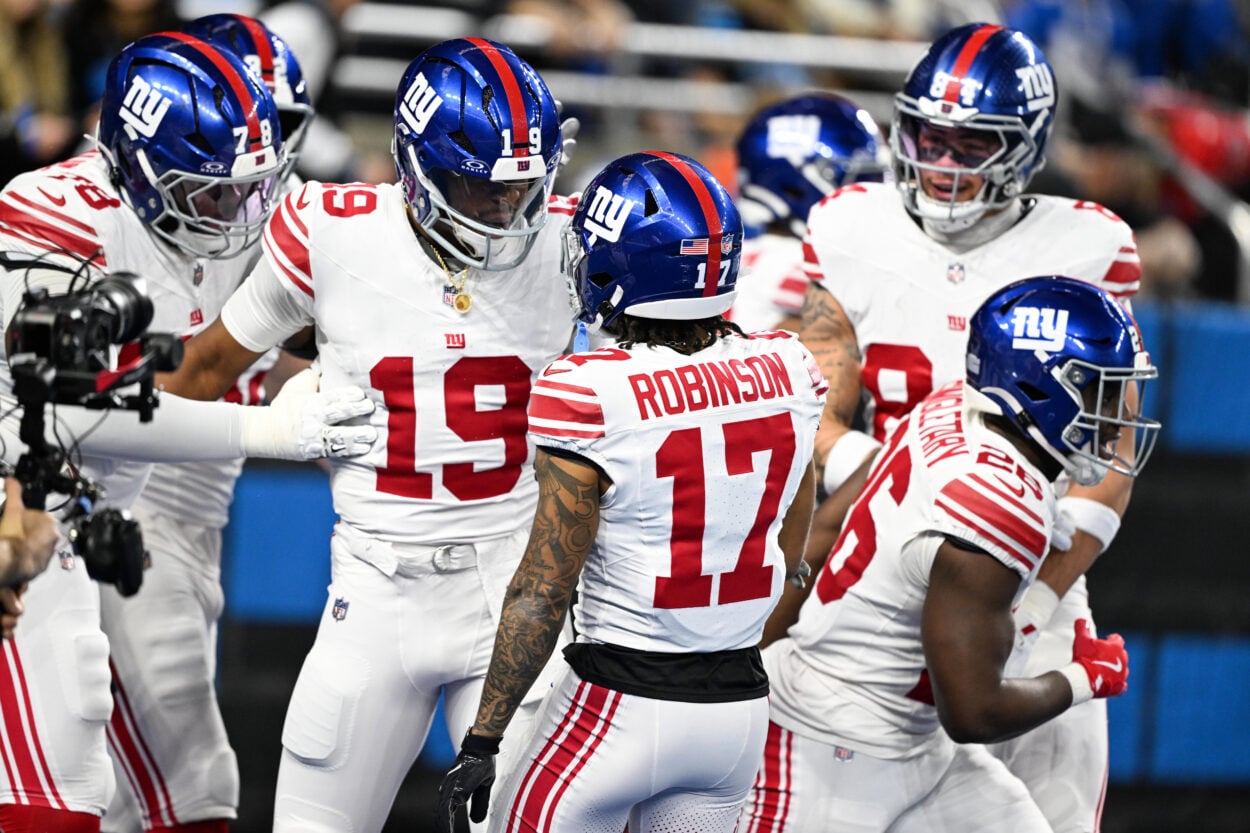
Nine catches. 156 yards. One touchdown against a defense that prides itself on breaking people.
When you watched Giants‘ Wan’Dale Robinson dismantle the Detroit Lions recently, you weren’t watching a gadget player. You were watching a primary weapon. For a guy standing just 5-foot-8, Robinson played like a giant, finding soft spots in the zone and turning short slants into explosive gains. He is currently one of only two receivers in the entire league to post over 140 yards and a score in multiple games this season.
That performance didn’t just help the New York Giants on the scoreboard; it likely added a few zeros to the check they need to write him this offseason.
The Myth of “Cap Hell”
Let’s clear up a misconception about the Giants’ finances. On paper, the team has a projected $17.3 million in cap space for 2026. That sounds tight. It sounds like a problem. But in reality, it is a mirage.

General Manager Joe Schoen is sitting on a gold mine for 2027 with a staggering $113 million in projected space. This is where the magic of accounting comes in. The Giants can easily sign Robinson to a lucrative deal now, backload the heavy hits to 2027, and keep the immediate books clean. When your quarterback is on a rookie contract, you do not pinch pennies. You spend aggressively to surround him with playmakers who can separate.
Evolving Beyond the Check-Down
The biggest argument for paying Robinson is his evolution. Last season, he felt like a safety valve that didn’t go anywhere. He averaged a paltry 7.5 yards per reception in 2024, which was among the worst marks in football. He was catching the ball, sure, but he wasn’t scaring anyone.
This year is different. The 24-year-old has transformed his game completely:
- Explosiveness: He is averaging 12 yards per catch.
- Volume: He has already racked up 794 yards on 97 targets.
- Consistency: He is on pace to shatter his career high in targets while actually being efficient with them.
He isn’t just catching screens anymore. He is attacking the intermediate level of the field. He is breaking ankles in open space. He is finally becoming the dynamic playmaker the Giants envisioned when they drafted him.
The Malik Nabers Insurance Policy
Context is everything. The decision to pay Robinson roughly $15 million a year—a three-year, $45 million deal feels appropriate—isn’t made in a vacuum. It is made with one eye on the medical tent.
Malik Nabers is a superstar talent, but he is recovering from an ACL tear. That is a brutal injury for a receiver who relies on twitchy athleticism. While optimism is high, you cannot bet your entire 2026 season on Nabers returning to 100% form by Week 1. The New York Giants need a guarantee. Robinson provides that floor.
Drafting for Value, Not Need
If the Giants let Robinson walk, they back themselves into a corner. Suddenly, wide receiver becomes a desperate need in the draft. You end up reaching for a pass catcher in the first round instead of taking the best player on the board.
By locking up Robinson, you buy yourself freedom. You can draft an edge rusher. You can bolster the offensive line. You can take a corner. Re-signing Robinson turns the draft into a luxury rather than a rescue mission.
Pay the man. The price tag might look steep for a slot receiver, but for a quarterback’s best friend and an offense that needs stability, it is a bargain. The Giants have the future money to make it work. They just need the guts to sign the check now.
